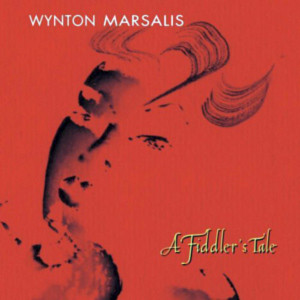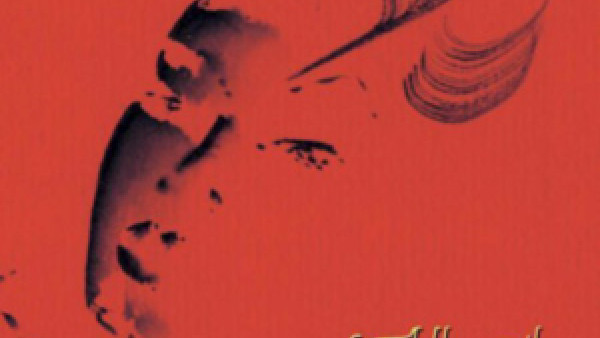The Devil Is in Details of ‘Soldier,’ ‘Fiddler’ Tales
It was a winter of rains and floods. But Royce Hall was full for a performance of Stravinsky’s “Histoire du Soldat” (Soldier’s Tale). The concert began an hour late because the trombonist was stranded on a flooded street. The composer was in the audience and nervous, according to the diaries of his amanuensis, Robert Craft. But he cheered up later that evening at Alma Mahler’s house, where Aldous Huxley pointed out that the name of an avant-garde literary journal, “transition,” he noticed on the shelf, spelled backward was “no it isn[‘t] art.”
That was in January 1952.
Saturday night, when “Histoire” was back in a crowded Royce Hall, the local social occasion of note wasn’t cultural but political—a fund-raiser with President Clinton, the presidential motorcade passing by just as the audience was exiting the UCLA campus. And the new version of Stravinsky’s popular music-theater piece was by a jazz composer, Wynton Marsalis, who wasn’t born until 1961.
And yet this collaboration by the Chamber Music Society of Lincoln Center and Jazz at Lincoln Center, which paired the Stravinsky original with Marsalis’ new companion piece, “A Fiddler’s Tale,” demonstrated that “Histoire” may actually mean more to us now than it did to the musical culture a half-century ago.
“Histoire” was invented from necessity. Waiting out World War I in Switzerland, Stravinsky needed money and was driven to invent a new kind of theater piece that could be taken on the road during wartime deprivation. With a libretto by C.F. Ramuz based on a Russian folk tale of a soldier tricked by the devil, Stravinsky produced what now seems the prototype of latter-day touring music theater, something akin to what Philip Glass and Robert Wilson had hoped to create with “Monsters of Grace,” which opened the newly renovated Royce Hall last month.
“Histoire” requires only a small ensemble of musicians and acted narration. Most notably, Stravinsky turned to jazz and popular dance as his musical model, breaking away from his modern folk-based style and ushering in cool neoclassicism. At the time this seemed a radical break, but now one can look back and hear in the dances the same physicality as in his “Rite of Spring” written five years earlier. In that sense, this work, an instant success that has never lost its popularity, was an early example of inspired crossover.
And that is the point of collaboration between the two Lincoln Center companies. From the jazz side, Marsalis and percussionist Stefon Harris (what a find, he!) joined chamber music regulars Ida Kavafian (violin), David Shifrin (clarinet), Edgar Meyer (bass), Milan Turkovic (bassoon) and David Taylor (trombone) for the Stravinsky. After intermission, the ensemble transformed itself into a Marsalis jazz band.
Such a project, which is currently touring the country before its Lincoln Center premiere later this week, builds bridges of many sorts, but is also full of problems. Marsalis, a talented classical player as well as a jazz phenomenon, has not exactly kept his Stravinskian chops in order, what with his over-packed jazz life. And the chamber players are tourists in jazz.
Neither version, new or old, exactly cooked. In the Stravinsky, Marsalis was a restrained team player but completely in command. No one really stood out, but that could have been an acoustical problem. Royce may need some time for the new materials to settle; thus far its sound lacks immediacy or presence. A conductor, too, might have helped spark tempos, as would a director when it came to focusing Andre De Shields’ difficult assignment assuming the roles of narrator, soldier and devil (his miking was also poor).
Marsalis’ piece fit with the Stravinsky curiously, its strong and weak points being just about the opposite of “Histoire’s.” Unlike Stravinsky, who clarified his style for this piece, Marsalis has muddied his own. He tries a lot. He refers to Stravinsky and all manner of jazz styles. Ideas are thick and not always settled. As in other large-scale Marsalis pieces, the composer seems to find himself as he goes along; a series of short set pieces may not be the best form for this loquacious musician. His modesty is false; he doesn’t give himself enough of the solo spotlight.
Still, when Marsalis does connect in the score, it is brilliant. Once or twice he finds just the right overpass between Stravinsky and blues, and he shows Stravinsky a thing or two about tango and ragtime. But he is less successful in finding a musical connection with the narrative by the equally loquacious Stanley Crouch. Here, though, De Shields was mesmerizing in a lavishly poetic cautionary account of a young violinist who sells her soul to a record producer, which is something that the music world can never hear too much of.
Kavafian, the musical star of both pieces, was magnificent.
by Mark Swed
Source: Los Angeles Times


